Potsdam – Glienicke Bridge (Glienicker Brücke)
The Glienicker Bridge is situated on the edge of Berlin. It spans the river “Havel” to connect the cities of Potsdam and Berlin. During the Cold War, the Glienicker Bridge was one of the few places in the world where the Soviet Union and the Western powers stood directly opposite each other. The bridge lies at an isolated point where US-occupied West-Berlin met the Soviet-occupied Potsdam (East Germany).
The Glienicke Palace (Schloss Glienicke) was designed by Karl Friedrich Schinkel for Prince Carl of Prussia in 1826. The two golden lions in the front of the building are versions of the Medici lions from the Villa Medici. The palace and park are UNESCO World Heritage sites as part of the Palaces and Parks of Potsdam and Berlin since 1990.
Potsdam – New Palace (Neues Palais)
The New Palace is situated on the western side of the Sanssouci royal park in Potsdam was build by Frederick the Great. The construction of the palace started 1763 and was finished after six years, 1769. It is considered to be the last great Prussian baroque palace.
Potsdam – Orangery Palace
The Orangery Palace (Orangerieschloss) is also known as the New Orangery on the Klausberg, or just the Orangery. It was built in the style of the Italian Renaissance, after the image of the Villa Medici in Rome and the Uffizi in Florence.
Potsdam – Park Sanssouci
Sanssouci Park is a large park surrounding Sanssouci Palace in Potsdam, Germany. Following the terracing of the vineyard and the completion of the palace, the surrounding is a baroque flower garden with lawns, flower beds, hedges and trees. The greenhouses of the numerous nurseries contained oranges, melons, peaches and bananas.
The park has a 2.5 km long straight main avenue and begins in the east at the 1748 obelisk and over the years was extended all the way to the New Palace, which marks its end in the west.
Potsdam – Church of Peace (Friedenskirche)
The Friedenskirch (Church of Peace) is a protestant church and is situated in the palace grounds of Sanssouci Park in Potsdam, Germany. The cornerstone of the churchhouse was laid on April 14, 1845 and the structure resembles a High Italian monastery. A narthex across the western side of the portal opens into an inner courtyard (atrium), in the middle of the courtyard the larger-than-life statue of Christ on the fountain is a copy of the marble original and an arcade surrounds the inner courtyard. Parallel to the southern arcade runs the cloister with the Heilsbronn Porch, an entrance to the Marly Gardens. The Heilsbronn Porch is a replica of a Roman tiered porch at the former refectory in the Heilsbronn Cloister in Middle Franconia.
Darmstadt – Mathildenhöhe
These photos were taken after a sunny autumn day in Darmstadt (Hesse), Germany.
The artists’ colony “Mathildenhöhe” was founded in 1899 by Ernest Ludwig, Grand Duke of Hesse and the first exhibition of the artists’ colony took place in 1901. Ernest Ludwig motto was: “My Hesse should flourish, and the art in Hesse too” and he brought together several artists of the Art Nouveau (Jugendstil) in Darmstadt: Peter Behrens, Hans Christiansen, Ludwig Habich and Joseph Maria Olbrich.
Frankfurt – Taunusanlage
The Deutsche Bank Twin Towers consists of two skyscrapers that are each 155 meters high and were built from 1979 to 1984 according to designs by Walter Hanig, Heinz Scheid, and Johannes Schmidt. The skyscrapers stand on the Taunusanlage near the Old Opera House, at the beginning of the Mainzer Landstraße.
Frankfurt – Around the old opera
The famous old opera house (Alte Oper) was built in 1880 by the architect Richard Lucae and the building was one of the major opera houses in Germany until it was heavily damaged in World War II. Until the late 1970s it was a ruin, with the nickname: “Germany’s Most Beautiful Ruin”. The public pressure resulted in a fully reconstructed and reopened Opera in 1981. The inscription on the frieze says: “Dem Wahren, Schönen, Guten” (“To the true, the beautiful, the good”).
